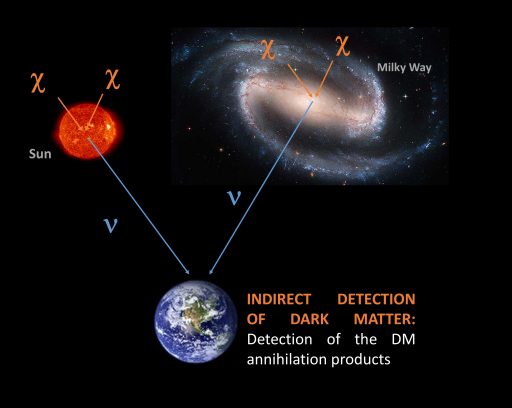Observations in cosmology and astrophysics seem to indicate that about 84% of the matter in the Universe is non-baryonic, non-relativistic and does not interact electromagnetically but only significantly through the gravity, the so-called dark matter.
A common assumption in the particle physics community is that dark matter is made of Weakly Interacting Massive Particles (WIMPs) that form a halo in which the visible baryonic part of galaxies is embedded. There are a variety of candidates for WIMPs, among which those provided by theories based on supersymmetry (SUSY) attract a great deal of interest. In some classes of minimal supersymmetric and universal extra-dimensional extensions of the Standard Model (MSSM and mUED), the lightest particle is stable. Consequently, these particles can only annihilate in pairs, making them a possible WIMP candidate for dark matter.
In these models, secondary high-energy neutrinos are produced from the self-annihilation products, or decays of them. The search for WIMPs can be performed either directly by recording the recoil energy of nuclei when WIMPs scatter on them in suitable detectors, or indirectly. The indirect approach, which is adopted here, exploits a radiation signature (gamma-ray, synchroton, positron, anti-proton or neutrino flux) produced by the self-annihilation of WIMPs accumulated in heavy astrophysical objects such as the Galactic Centre, the Sun or the Earth.
The ANTARES neutrino telescope has searched for neutrinos produced in self-annihilation or decays of Dark Matter particles. Tests and constraints to diffferent Dark Matter Models have been set looking at different sources:

